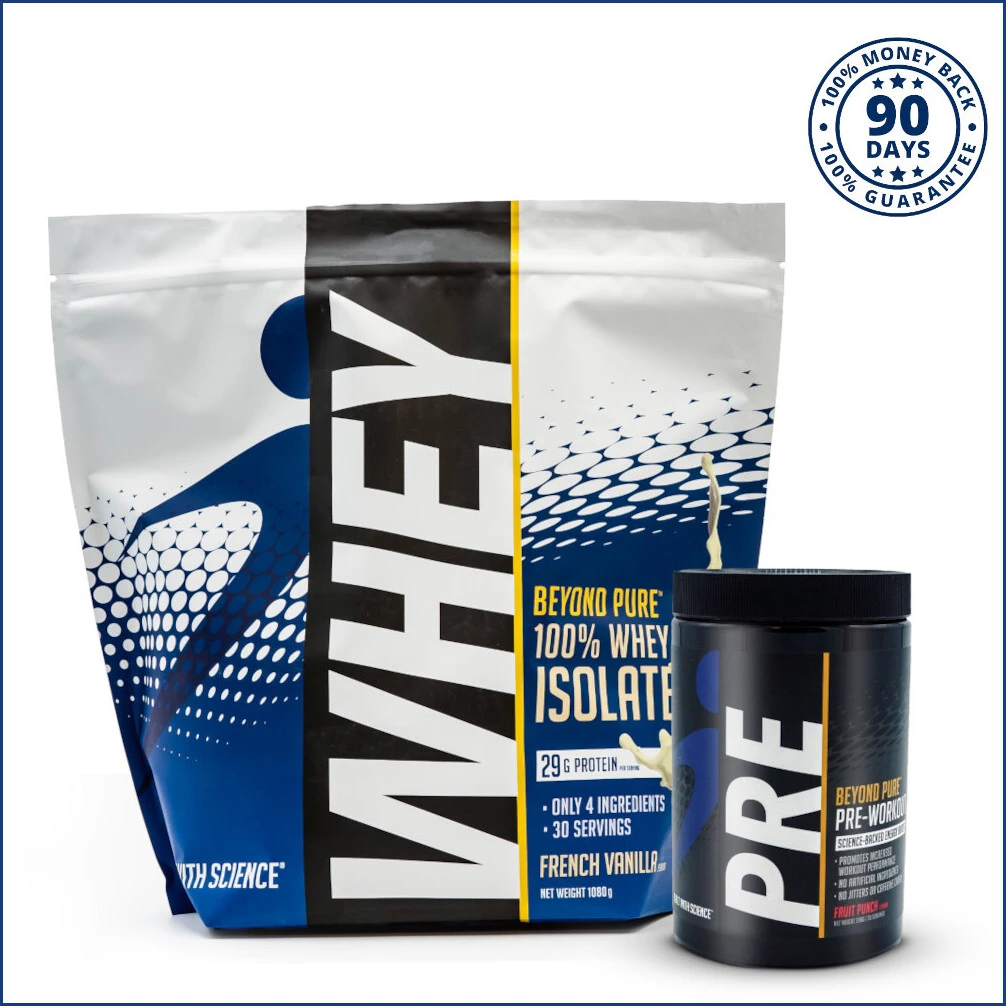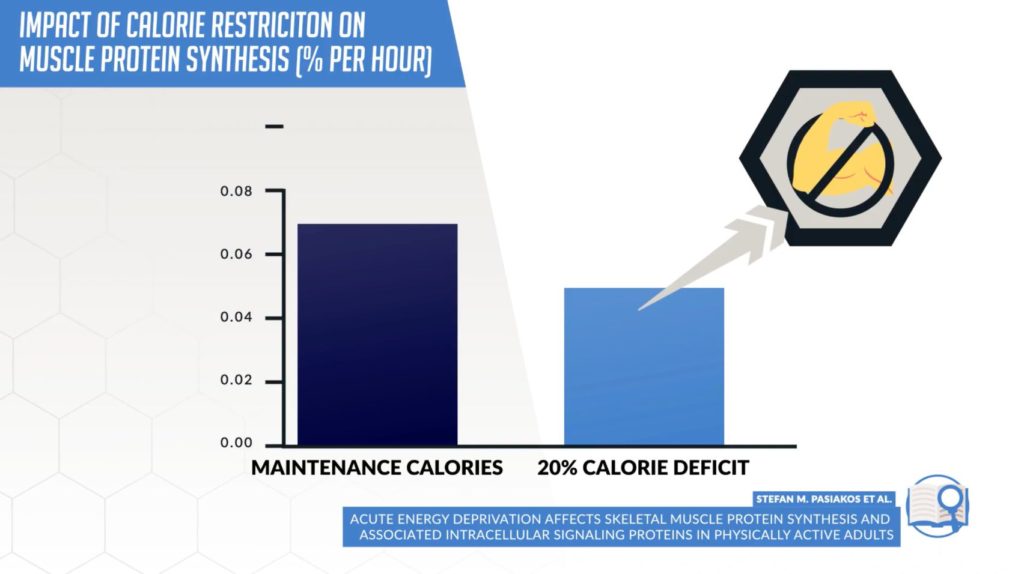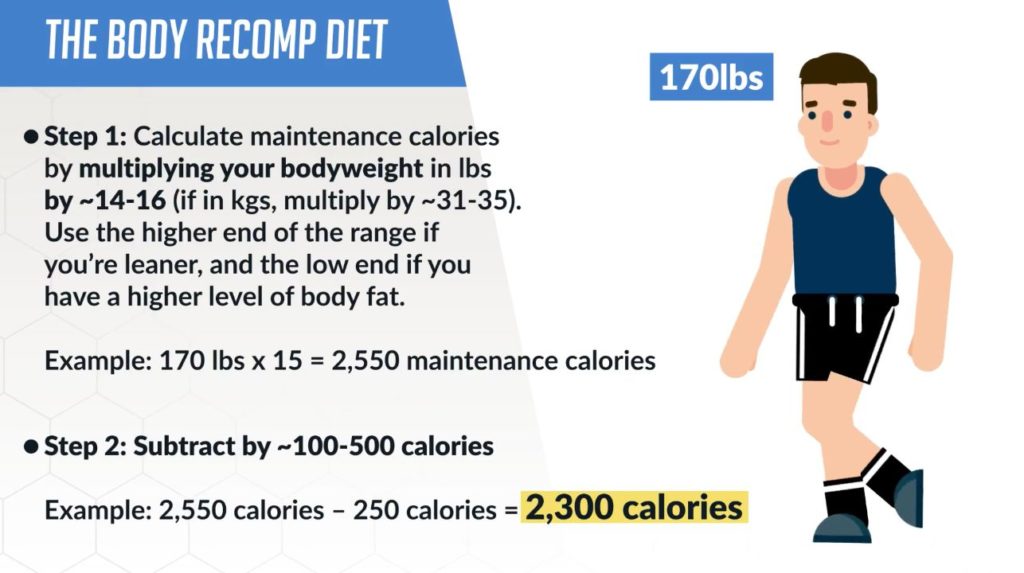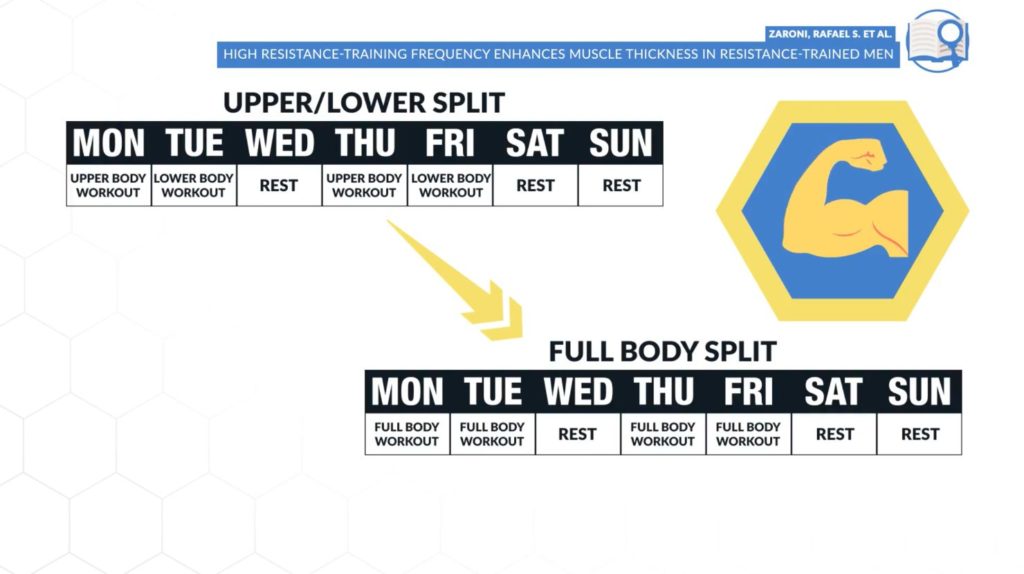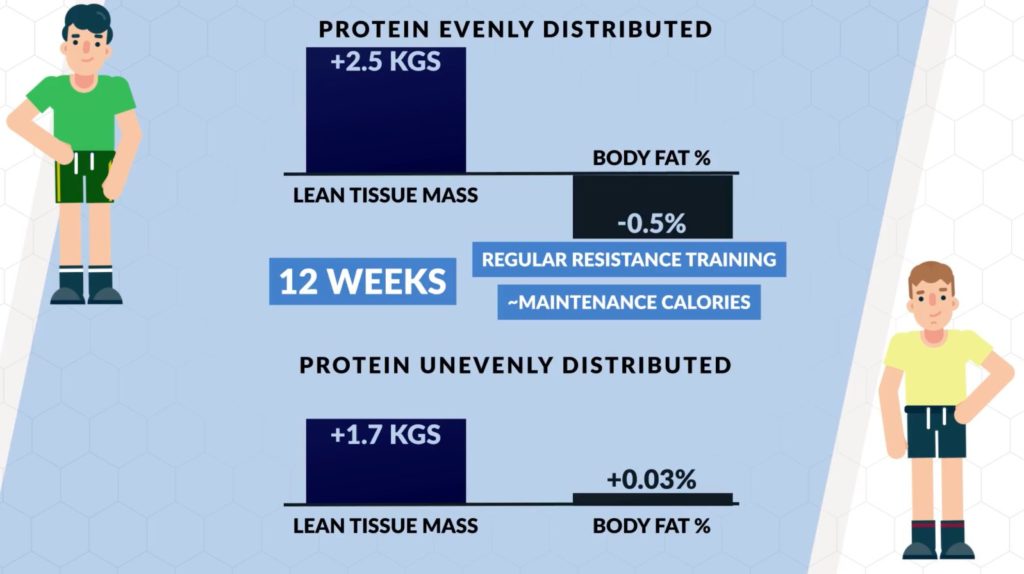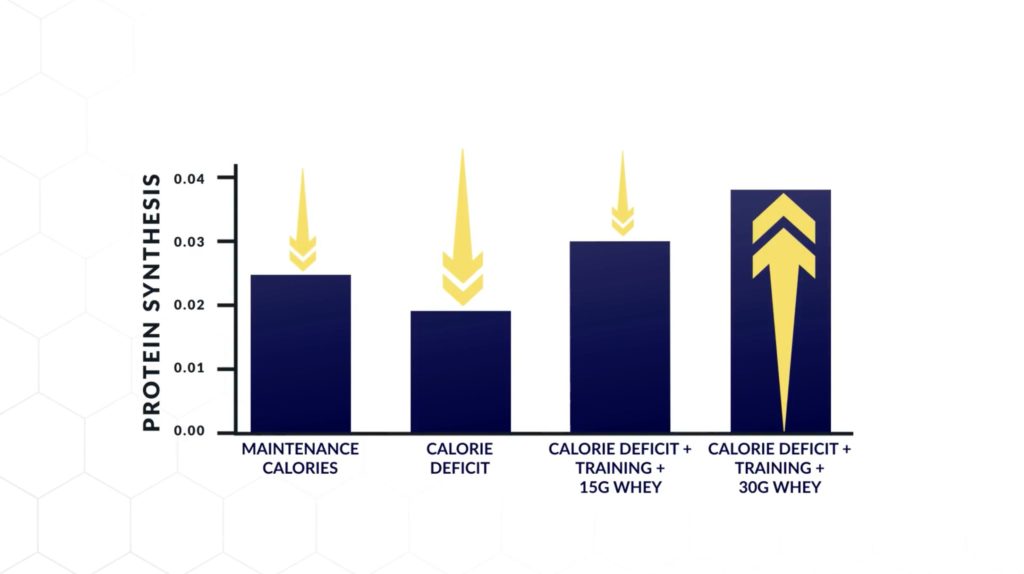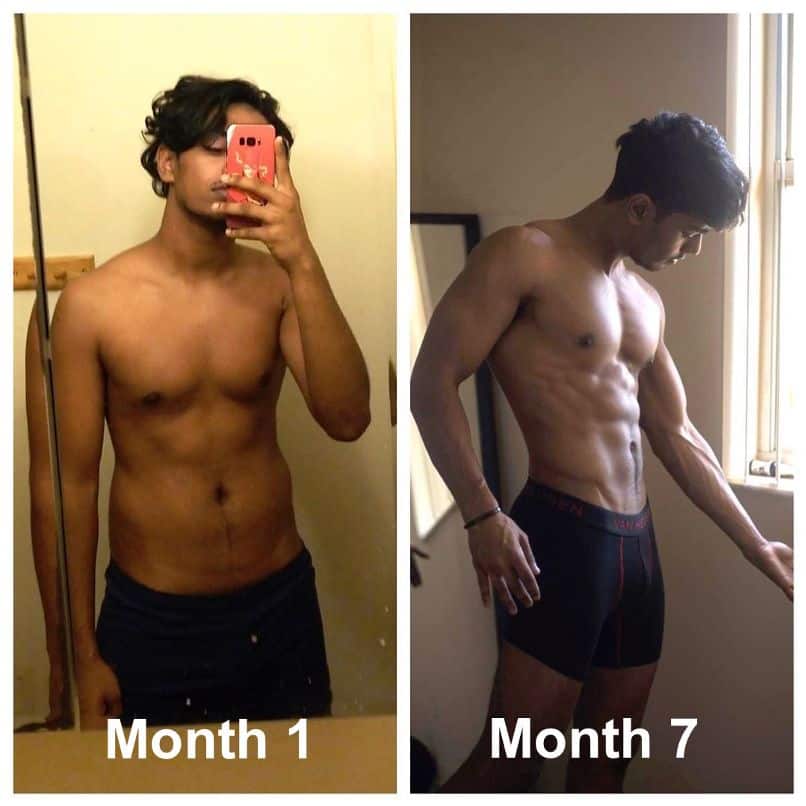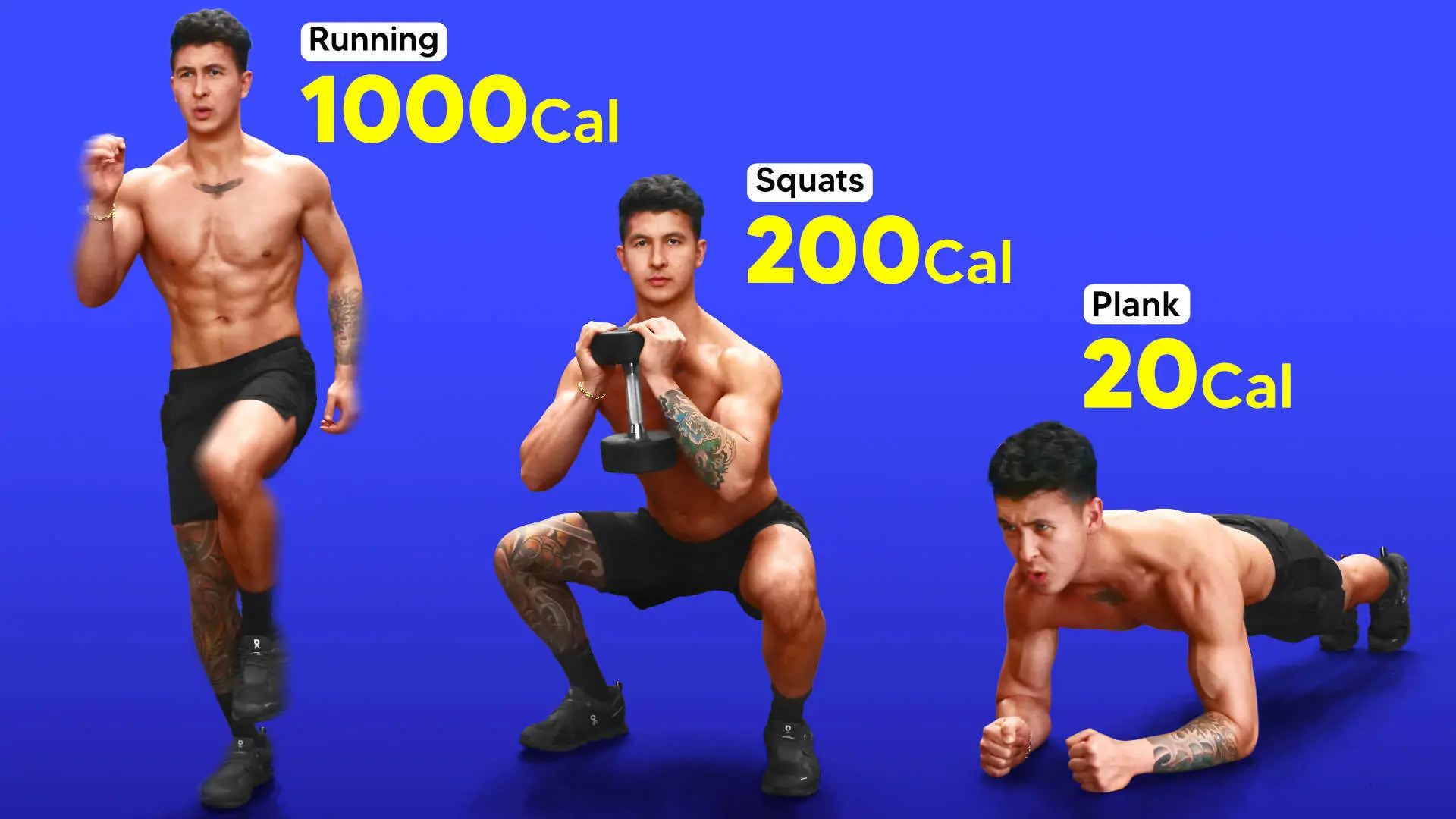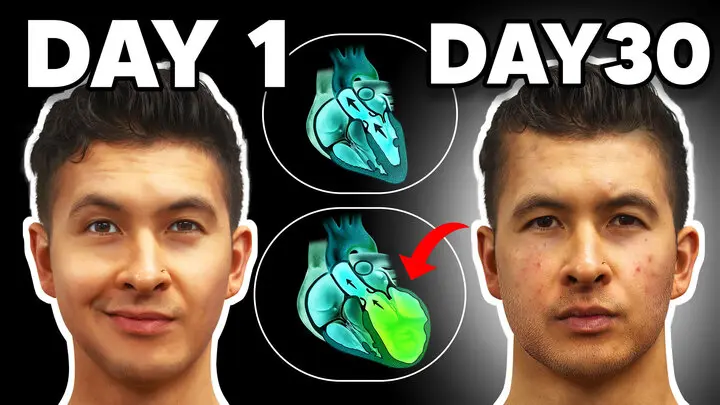How To Lose Fat And Build Muscle At The Same Time (3 Simple Steps)
In this article, I'll show you how you can burn fat and build muscle at the same time by just following 3 simple steps.
How do you get your body looking from this…. To this? More specifically, how do you lose fat and build muscle at the same time?
Well, there are two options available:
- Option 1 - Go on a bulk to focus on building muscle and putting on more size first. And then focus on losing weight to strip off the excess fat.
- Option 2 - Do the reverse. So focus on leaning down by stripping off the excess fat first. And then focus on building muscle afterwards.
But what if we could take a short cut? What if we could just build muscle and put on more size WHILE simultaneously getting leaner in the process?
And this is the whole idea behind what’s known as body recomposition. This is where you build muscle and lose fat at the same time. Which is a stark contrast to having to choose between one or the other.
Body recomp is basically the holy grail when it comes to body transformations. This is especially for those with a skinny fat or higher body fat physique. Since you’ll be able to shred off fat while building muscle (two exact things that your body needs to aesthetically look better) with just one process.
By the way: if you’re looking for a training program that’ll help you gain muscle and lose fat in the quickest possible way, I’ve got just the thing for you. Every BWS program is designed to help you transform your physique in the most time-efficient manner. And best of all? It’s all rooted in science. For more information on how BWS programs can help you to look better – FAST:
Click the button below to take my analysis quiz to discover the best program for you:
↓
Body Recomp Is Challenging, But Not Impossible, To Achieve
However, body recomposition does come with a catch.
Why? Because the basic law of thermodynamics tells us that we need to be at a calorie deficit in order to lose weight and strip off fat. But the drawback with being at a calorie deficit is that it severely compromises our ability to build muscle. That's because our performance in the gym tends to suffer.
And it's not just that as well. Multiple papers (here, here) have also shown that muscle protein synthesis significantly reduces by about 20-30%. As we just aren’t providing adequate fuel for our muscles to recover and grow bigger.
Which just makes building muscle while losing fat very difficult for your body to physiologically do when it’s in a calorie deficit. However, this doesn’t mean it’s impossible. Because there does seem to be a loophole to this. And with the protocols I’ll go through in this article, the body has actually been shown to be able to metabolize and use your own body fat to now provide the necessary energy it needs to recover and grow your muscles despite being in a calorie deficit. Hence enabling you to build muscle and lose fat simultaneously.
Certain Individuals Will Find It Easier To Lose Fat And Build Muscle At The Same Time
With that being said though, research (here, here) does indicate that certain individuals are more likely to experience this. And would thus benefit the most from the protocol I’ll go through.
These are:
- Beginner lifters with no or minimal training experience.
- Detrained individuals who have spent some time off from the gym.
- Those at quite a high body fat of for example over 25%.
- “Slackers” who have never taken their training and nutrition seriously or have never really been consistent with it.
Trained, experienced individuals are less likely to experience body composition. Nonetheless, it's still occurred countless times in the research and in my own experience. And, in my opinion, is definitely still highly possible. This is especially with the proper execution of the protocol I’ll be sharing with you today.
So with that being said, if you:
- Fit into one of the four categories previously mentioned OR
- Just simply want to give this protocol a shot
...Then here’s what you’ll want to do.
Step 1: The Body Recomp Diet
The first thing you need to do is set up your diet. Which is going to be the most important factor in achieving a body recomposition. Now, we do want to be at a calorie deficit to enable fat loss to occur. But research has also shown that the larger the calorie deficit, the greater the reduction in protein synthesis. And, therefore, the less likely you’ll be to experience muscle growth as you strip off fat.
For this reason, what you’ll want to do is eat at a very slight deficit of roughly 5% to a maximum of 20%. For most individuals, this equates to about around 100-500 calories below maintenance calories. If you’re at a higher body fat percentage, I’d aim for the higher end. And vice versa for those at a lower body fat percentage.
This way, your body will:
- Have the sufficient energy it needs for optimal performance in the gym and recovery.
- Won’t experience nearly as dramatic of a decrease in protein synthesis for muscle growth.
And
- Will be adequately fueled. And hence be able to achieve further fat loss through better exercise expenditure, a faster metabolic rate, and higher levels of NEAT. In other words – you’ll burn more calories per day by being more subconsciously active since you’re better fueled.
What I’d recommend is:
- Simply multiply your bodyweight in lbs by 14-16 depending on your body fat. This gives you a rough idea as to what maintenance calories are for you.
- And then subtracting that number by 100-500 calories to get your suggested daily calorie intake.
How Much Protein For Body Recomp?
Then, as for your macros, protein will be where you’ll want to place most of your attention.
Illustrating its importance are two recent protein studies (here, here) have compared the effects of a higher vs lower protein intake on body composition. Both studies found that despite being in quite an aggressive calorie deficit, the subjects in the:
- Higher protein groups - Able to build muscle and lose fat simultaneously WHEREAS
- Lower protein groups - Failed to do so and instead loss muscle mass
Thus, what I’d recommend is aiming for around a protein intake of around 1g/lb of your bodyweight. With the possibility that shooting even higher than this may, in fact, boost the likelihood of your ability to recomp. This is especially if you’re on the leaner side.
Then, with the rest of your calories, you’d simply fill them up with carbs and fats. I would however personally recommend a relatively higher carb and lower fat approach. Doing so will better fuel your body for performance in the gym.
Struggling to hit your daily recommended intake of protein? Don't worry. Our 3-on-1 coaching program can help. You will not only have a dietitian to customize your nutrition plan, but also a coach to focus on your training plans - plus, there's me to answer your questions every month! You'll achieve your dream physique in record-breaking time. Sounds good? Let's get started then:
Click the button below to find out more about the 3-on-1 coaching program:
↓
Step 2: Switch Up Your Training
Next, we’re going to dive into your training. Now what we want to do here is first ensure that we’re adhering to an optimal training plan. And as I’ve discussed in past articles, you should train each of your muscles:
- At a frequency of at least 2x/week AND
- Sufficient volume of around 10-20 sets per muscle per week
Going beyond this though, what I’d advise you do is actually switch up your routine. For example:
- Switching to a new training split
- Increasing or decreasing your muscle training frequency, AND/OR
- Switching up some of your exercises or the manner in which you perform them
What this will do, and as shown in past training frequency research, is it’ll provide a novel stimulus to your muscles. And this increases the likelihood that you can spark new muscle growth as you continue to lose fat. This is especially if you’ve been stuck using the same routine for the past little while.
And if you’re unsure as to what to switch up, here are 3 different free routines that I’ve released:
...that you can consider transitioning to in order to introduce that novel stimulus to your muscles. Use your new routine consistently. And focus on gradually getting stronger and progressively overloading it week after week. This helps you continue stimulating your muscles for growth.
Step 3: Optimize Nutrient Timing
Next, we need to optimize our nutrient timing. Which you should ideally already be doing but need to start taking more seriously if you’d like to increase your odds of body recomposition.
And there are two things we want to do here.
Step 3.1 = Protein Distribution
First, you need to ensure that you’re evenly spreading out your daily protein intake into about 3-5 meals throughout the day. Why? Because doing so keeps your protein synthesis levels elevated and optimized throughout the day. Which will best help your muscles recover and grow despite being in a calorie deficit.
Illustrating the importance of this is a 2020 paper released just last month, that compared the effects of:
- Evenly spreading out one’s daily protein intake into 3 meals throughout the day VS
- Skewing most of the protein into just 2 meals a day
Calories and total daily protein intake were both equated and controlled for. What they found was that after 12 weeks of this, combined with regular resistance training and despite both groups eating at around maintenance calories, the evenly distributed protein group managed to achieve a body recomposition and gained a few lbs of muscle WHILE simultaneously dropping their body fat by half a percent. Whereas the other group gained less muscle. And actually ended up experiencing a slight increase in their body fat percentage.
Which the researchers attributed to the better 24-hour muscle protein synthesis levels in those who evenly distributed their protein compared to those who did not. And that's despite both consuming the same amount of protein and calories by the end of the day. So, take your daily protein intake, and ensure that you’re spreading this out as best as you can into at least 3 meals per day.
Step 3.2 = Peri-Workout Nutrition
Now, taking this one step further, we also want to optimize the meals we eat around our workouts. Because when you’re in a calorie deficit, we again not only experience a decrease in protein synthesis levels but we also see a rise in cortisol levels especially when we train. Which can negatively impact our resulting muscle growth and recovery.
And research has shown that by ingesting adequate protein around our workout with a post-workout shake, for example, we’re able to blunt the cortisol response and significantly increase protein synthesis compared to if we didn’t ingest anything or just didn’t ingest enough protein. Thus increasing the chances that we can build muscle despite being in a deficit.
And in fact, a study in trained lifters showed that those who optimized their pre AND post-workout nutrition by having sufficient carbs and protein before and after their workouts were able to significantly:
- Increase their strength AND muscle gains WHILE
- Dropping their body fat percentage by 1% after a period of 10 weeks
Whereas subjects who instead had the exact same pre and post-workout meals but much earlier before and much later after their workout ended up:
- Gaining less strength AND less muscle mass WHILE
- Failing to lose any fat
...Thus failing to achieve a body recomposition despite all other variables being held equal.
Meaning that if you want to maximize your chances of experiencing a body recomposition, then you should optimize your protein distribution throughout the day. And, more importantly, aim to optimize the meals around your workouts by having adequate carbs and protein shortly before and after you train.
How To Lose Fat And Build Muscle At The Same Time: Action Plan
So, to sum the steps up for you, here’s what I’d recommend as an action plan:
Step 1 (Set Up Nutrition)
Eat just slightly below maintenance calories (~5-20% deficit, or ~100-500 calories below maintenance). Multiplying your bodyweight in lbs by ~14-16 can give you an estimate as to what your maintenance calories are. Ensure your protein intake is ~1g/lb of your bodyweight. And consider going above this if you’re relatively leaner (e.g. 15% body fat or below).
Step 2 (Switch Up Training)
Switch up your training routine (new workout split, exercises, execution, training frequency, etc). Ensure that you’re training with the optimal muscle training frequency and weekly volume. But switch up your training to provide a new stimulus for growth.
Step 3 (Optimize)
Spread your daily protein intake fairly evenly into at least 3 meals per day. Also, ensure that you’re ingesting adequate pre AND post workout protein + carbs in a timely manner.
As you implement these steps and progress throughout the weeks though, take measurements to assess your results.
If your weight is more or less remaining the same, yet your waist circumference is decreasing, your muscle measurements are increasing, you’re getting stronger in the gym, and you visually look better then these are all signs that you are indeed successfully achieving a body recomposition.
Bonus Step (Measure)
Track your bodyweight, circumference measurements, progress pictures, and strength in the gym. Use these to variables to gauge your progress.
Final Takeaway
So, can you lose fat and build muscle at the same time? Yes. That said, all in all though guys, a body recomposition honestly isn’t for everyone. But in the cases I went through and with the protocol I previously outlined, it can be an effective way for you to shortcut your transformation. And take advantage of the current situation you’re in.
But, in the long run, you’ll likely eventually want to transition to a dedicated muscle building or fat loss period and prioritize one or the other. And for an all in one, step by step program that shows you not only how to successfully achieve a body recomposition, but also then shows you exactly what to do afterwards so that you can continue to strip off fat and build lean muscle as efficiently as possible with science, just like countless other members like Eshan below...
...Have done with their Built With Science programs, then:
Click the button below to take my analysis quiz to discover the best program for you:
↓
Hopefully, you now know how to lose fat and build muscle at the same time! Don’t forget to give me a follow and connect with me on Instagram, Facebook, and Youtube as well, in order to stay up to date with my content.



